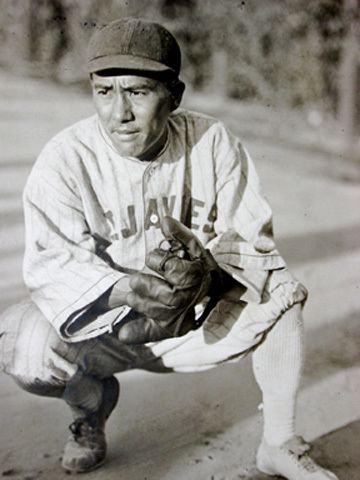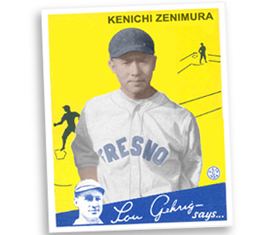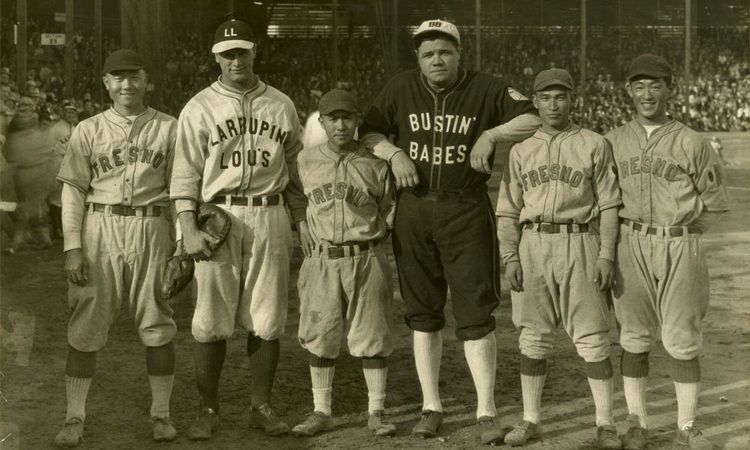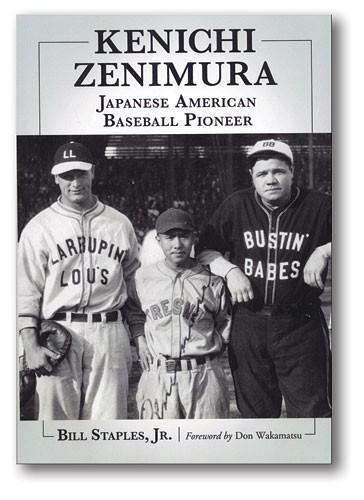Name Kenichi Zenimura Weight 48 kg | Height 1.52 m Role Baseball Player | |
 | ||
Died November 13, 1968, Fresno, California, United States | ||
Kenichi zenimura 2011 book trailer video
Kenichi Zenimura (January 25, 1900 – November 13, 1968) was a Japanese baseball player and manager, known as "The Dean of the Diamond." After his death he has come to be recognized as "The Father of Japanese American Baseball".
Contents
- Kenichi zenimura 2011 book trailer video
- Book trailer kenichi zenimura japanese american baseball pioneer
- Legacy
- References

Zenimura was born January 25, 1900 in Hiroshima, Japan and his family moved to Honolulu, Hawaii shortly afterwards. He first played baseball at Mid-Pacific Institute formerly the Mills Institute for Boys. In 1920 he moved to Fresno, where he played baseball on Japanese-American and previously all-white teams.

Many baseball historians believe he earned his titles for his remarkable career as a player (he excelled at all nine positions), manager (of Japanese-American league teams and European American teams in the Twilight leagues for older players), and international ambassador of the game (he led tours to Japan in 1924, 1927 and 1937).

In addition to organizing barnstorming tours to Japan, Zenimura was instrumental in the negotiations that led to Babe Ruth's visit to Japan in 1934. Several years earlier, in 1927, Zenimura also helped arrange a barnstorming tour to Japan for the Negro-league All-Star Philadelphia Royal Giants, led by Hall of Famers Biz Mackey and Andy Cooper.
During World War II, Zenimura and 120,000 other Japanese-Americans were sent to internment camps across the southwest United States, as directed by Executive Order 9066, signed by President Franklin Delano Roosevelt, on February 19, 1942.
Zenimura and his family were interned in Arizona on the Gila River Indian Reservation at the Gila River War Relocation Center. Almost immediately upon arrival at Gila River, Zenimura built a baseball field and established a 32-team league. Baseball at Gila River gave Japanese-Americans a sense of pride, hope and normalcy, making life bearable during their unjust incarceration. A book called Barbed Wire Base ball told many facts of him making the baseball field.
With the closing of Butte Camp at Gila River, Zenimura field officially closed on November 10, 1945.
Zenimura returned to Fresno, California, and continued to play competitive ball until the age of 55. In the early-to-mid-1950s, Zenimura was instrumental in negotiating the professional baseball contracts of several Japanese-American players in the Central League and Pacific League including contracts for Satoshi "Fibber" Hirayama, and his sons Kenso (Howard) and Kenshi (Harvey) Zenimura, all of whom later played for the Hiroshima Carp.
Kenichi Zenimura continued to manage until his death on November 13, 1968, in Fresno, California.
Book trailer kenichi zenimura japanese american baseball pioneer
Legacy
During the 18th Annual Cooperstown Symposium on Baseball and American Culture (2006), a campaign was launched to establish a permanent exhibit for Japanese American Baseball in the National Baseball Hall of Fame, as well as the enshrinement of the first Japanese American player.
The campaign proposes that the first Japanese American player enshrined with a plaque in Cooperstown is Kenichi Zenimura, "the Father of Japanese American Baseball". In 2006, Zenimura was honored in the Baseball Reliquary.
In addition, a film about baseball in the internment camps called American Pastime was released in 2007.
Finally, a full-length biography titled Kenichi Zenimura, Japanese American Baseball Pioneer, by baseball historian Bill Staples, Jr., with a foreword by Don Wakamatsu, the first Asian-American manager in MLB history, was published by McFarland & Company in 2011.
